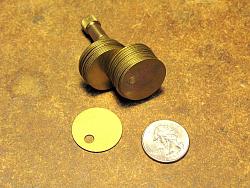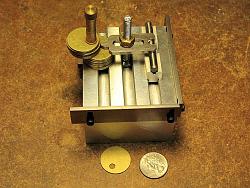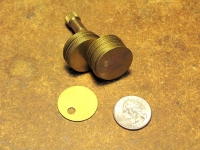Sometimes I need to clamp a small piece of stock at one end of my bench vise. Without adding any packing to the other end, the jaws tilt resulting in poor clamping action. Adding packing of exactly the right thickness solves that problem. But I don't always have such packing. One solution is a variable thickness packing block orů a Jaw Jack.
If you are interested, please see
https://rick.sparber.org/DropInJawJack.pdf
Your comments are welcome. All of us are smarter than any one of us.
Thanks,
Rick



 LinkBack URL
LinkBack URL About LinkBacks
About LinkBacks


 Reply With Quote
Reply With Quote







Bookmarks